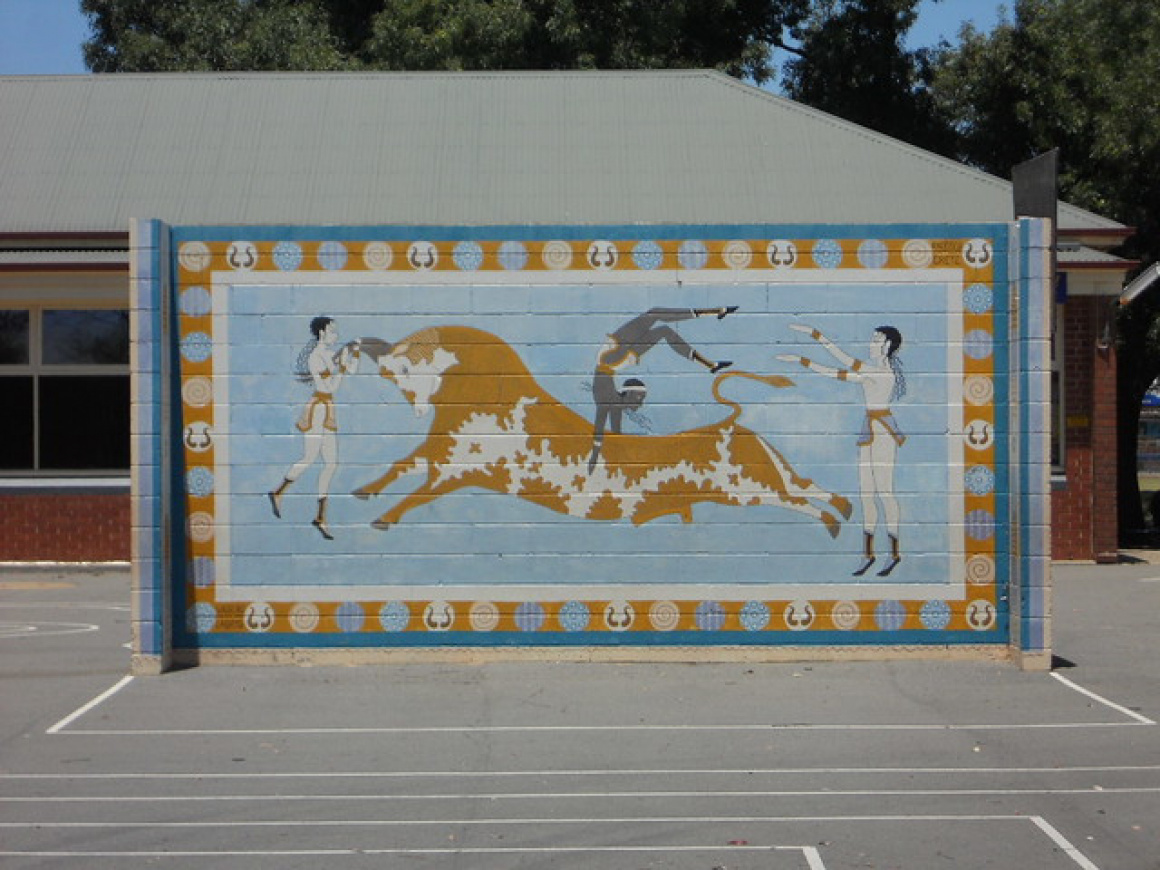Crete's artistic heritage is as rich and layered as its history. From the ancient frescoes of the Minoans to the vibrant folk art traditions and emerging contemporary art scene, Crete has always been a place of creativity and cultural expression. Exploring Cretan arts offers insight into the soul of the island and reflects its diverse past and resilient spirit.
Ancient and Byzantine Art
Art in Crete goes back to prehistoric times. The Minoan civilisation (circa 2000–1400 BC) produced stunning artworks, especially frescoes and pottery. If you visit the archaeological sites of Knossos or Akrotiri (on Santorini, which was a Minoan outpost), you'll see vivid fresco paintings that capture scenes of nature and society: playful dolphins, processions of elegantly dressed figures, acrobats leaping over bulls. The Minoans used bright colours – cobalt blue, terracotta red, ochre – and their style was fluid and naturalistic. A famous piece is the Prince of the Lilies fresco from Knossos, depicting a priest-king figure adorned with lilies and peacock feathers. Their pottery, like the Kamares ware, was equally artistic with swirling geometric and floral designs.
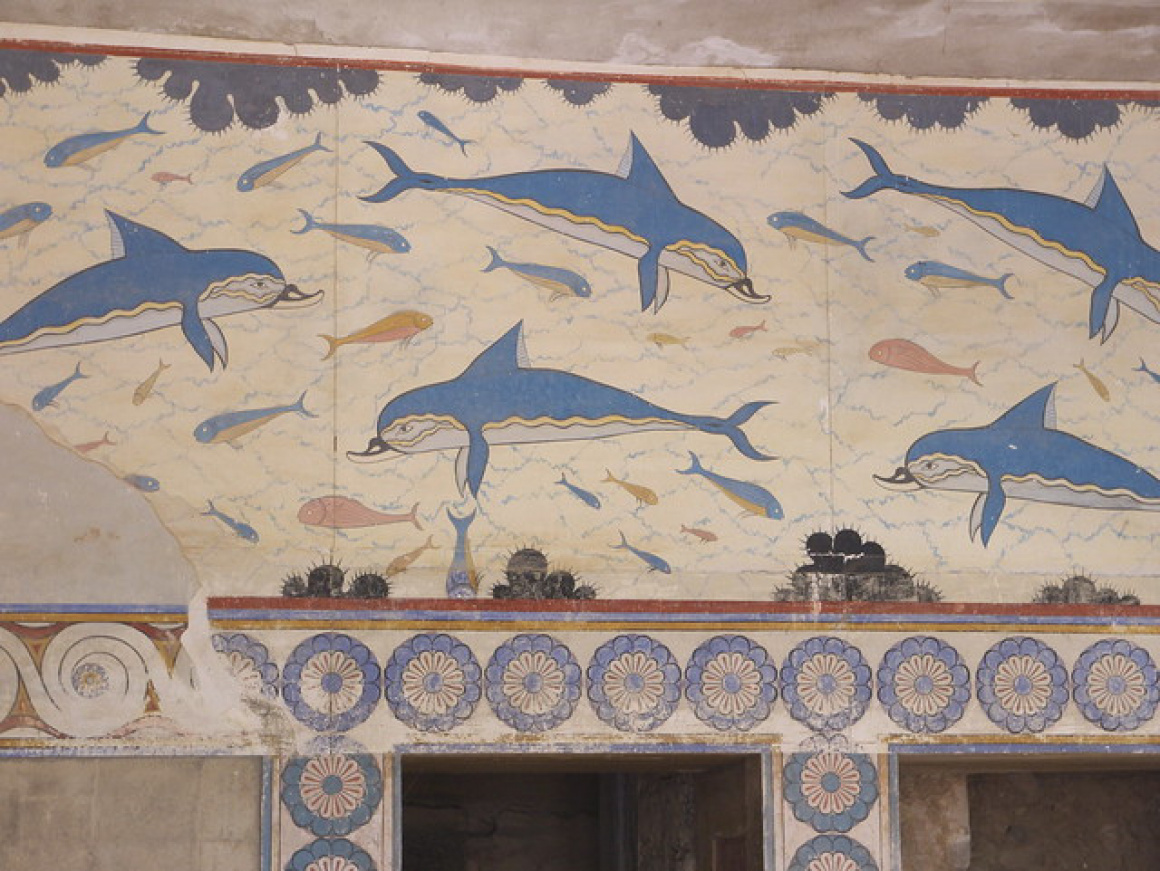
 'Knossos' - Attribution: Tim Schofield
'Knossos' - Attribution: Tim SchofieldMoving forward, Crete in early Christian and Byzantine times contributed to religious art. As Christianity took root, iconography and mosaic art flourished. Crete had skilled icon painters by the Middle Ages, some remote chapels in the Cretan countryside still preserve Byzantine-era frescoes of saints on their walls. For example, the Panagia Kera church in Lassithi has well-preserved 13th-century frescoes. Crete also became famous for its school of icon painting during the Venetian period – a Cretan School of art emerged, blending Byzantine tradition with Renaissance influence. This school produced many talented artists, the most renowned being El Greco. Born in Crete (when it was under Venice) and trained as an icon painter, two of his original paintings, View of Mt. Sinai and The Baptism of Christ, are on display in the Historical Museum of Crete in Heraklion – they are the only El Greco works on Crete and are a must-see for art lovers. These works are invaluable pieces linking Crete to the broader European art world.
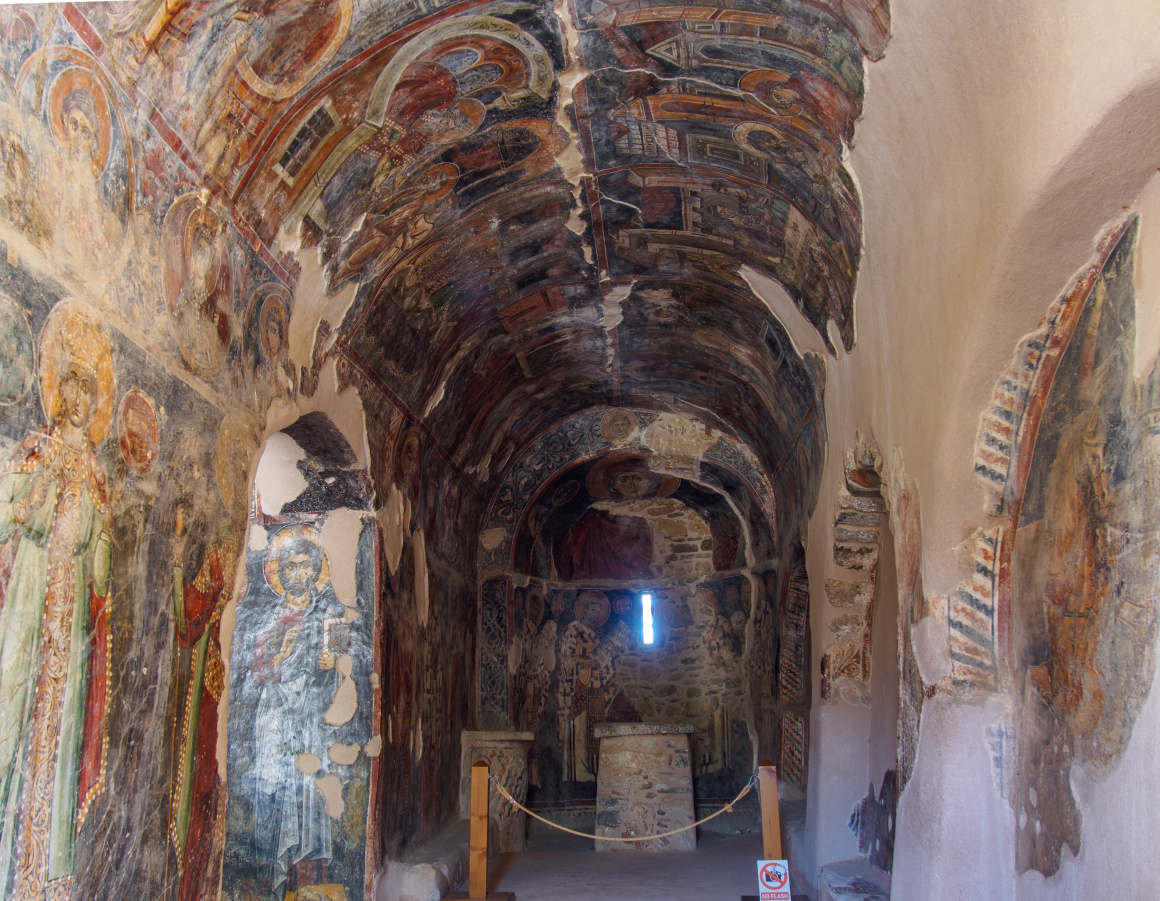
 'This is a photo of a monument in Greece identified by the ID' - Attribution: C messier
'This is a photo of a monument in Greece identified by the ID' - Attribution: C messierCrete's Renaissance under Venetian rule saw local artists creating frescoes in monasteries and icons that were exported throughout the Orthodox world. Michael Damaskinos is another notable Cretan painter of the 16th century who travelled and even painted in Venice, then returned to Crete, his works can be seen in the Church of St. Titus in Heraklion and elsewhere. In this era, we also see the influence of Western art with Cretan painters adopting elements of Venetian painting – more realism, perspective, and a figurative style – while still maintaining Orthodox iconographic themes, a true fusion of East and West aesthetics.
Folk Art and Handicrafts
Art in Crete isn't just something found in museums – it lives in the villages through folk art and handicrafts passed down through generations. One of the most famous is weaving and embroidery. If you venture to mountain villages like Anogia or Zoniana, you'll find women still weaving on traditional looms, producing textiles with intricate geometric patterns. These often become rugs, tapestries, or the beautiful Cretan “kilims” (woven carpets). Traditional Cretan embroidery adorns tablecloths and linen, often with motifs of flowers, olive branches, or geometric borders – handicrafts that mothers teach daughters, keeping the art alive.

 'Border Strips of a Skirt 1600s–1700s' - Attribution: museado
'Border Strips of a Skirt 1600s–1700s' - Attribution: museadoCeramics is another age-old craft. Crete has a lot of clay, and Minoan pottery started the trend. In modern times, villages such as Margarites (in Rethymno prefecture) are known for pottery. Strolling through Margarites, you'll see workshop after workshop with colourful pots, vases, and plates on display. Many are hand-painted with designs that harken back to ancient or Byzantine styles, such as the octopus design (an homage to Minoan marine art) or Byzantine blue and white flourishes.
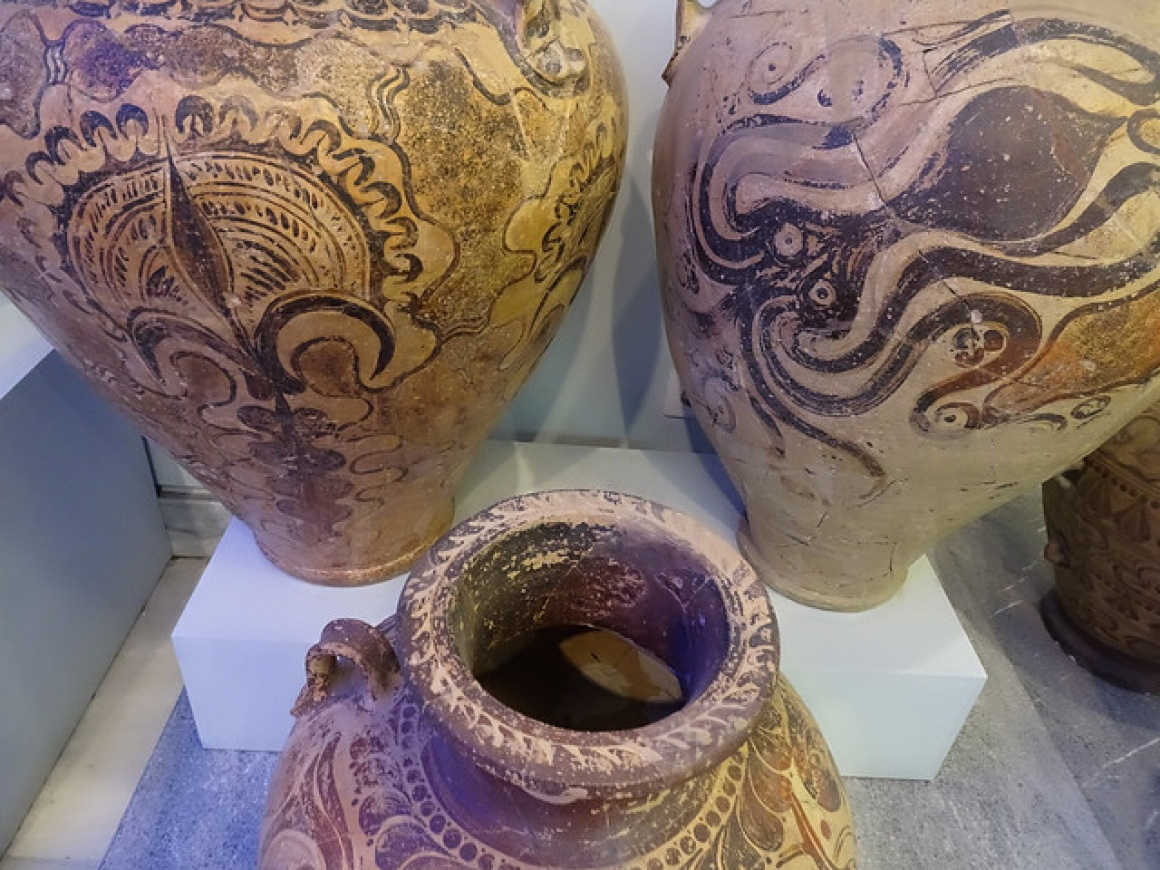
 'Reconstructed Pots' - Attribution: mikecogh
'Reconstructed Pots' - Attribution: mikecoghWoodcarving is also part of Crete's folk arts – often seen in carved icon screens in churches or in rustic furniture. In Chania's old town, you can find woodcarving workshops where craftsmen create everything from shepherds' crooks (a symbol of Crete) to ornate decor. Speaking of shepherds, the making of the traditional Cretan lyra (the pear-shaped fiddle) is a craft that borders on art. Master luthiers in Crete carve lyras from aged wood, often adding inlay decoration. The lyra produces the haunting music that accompanies Cretan dances – truly an art form where the craft and performance come together.
Costume design in traditional clothing is another folk art: Cretan traditional costumes are elaborate – for men, the high black boots (stivania), baggy breeches (vraka), embroidered waistcoat, and the distinctive black head-scarf (sariki) with fringes, for women, colourful silk scarves and tiered dresses with gold-thread embroidery. These costumes, still worn during festivals by dance troupes or proud locals, are often handmade, with each element representing a unique piece of art – the sariki, for instance, is a crocheted headpiece that can take weeks to make.
Literary and Performing Arts
Art in Crete isn't only visual. The island has a strong tradition in literary arts and music. While not strictly “visual art,” it's worth noting how Crete's contribution to the arts has been profound, with literature and music often blending with visual culture. The Renaissance period gave birth to Crete's most famous literary work, Erotokritos, a romantic epic poem written around 1600 by Vitsentzos Kornaros in the Cretan dialect. It's written in verse and traditionally accompanied by the lyra. To this day, verses from Erotokritos are sung or recited, and its influence on Greek literature is significant.
In more recent times, Crete produced one of Greece's literary giants, Nikos Kazantzakis (author of Zorba the Greek and The Odyssey: A Modern Sequel, among others). Kazantzakis (1883–1957) was from Heraklion, and his novels and poems often explore the human condition while drawing on Crete's spirit. There is a Kazantzakis Museum in his home village of Myrtia outside Heraklion that celebrates his life and work.
Music and dance are performing arts that are inseparable from Cretan culture. Traditional Cretan music – featuring instruments like the lyra, lute, and mandolin – is an art form in itself. Famous Cretan musicians such as Psarantonis or the late Nikos Xylouris are revered for their soulful tunes that can move audiences to tears or invite them to dance. Attending a live mantinades session, where musicians improvise rhyming couplets on the spot, is a unique experience that fuses poetry and music.
Contemporary Art Scene
Modern Crete continues to foster art and artists. The major cities boast galleries and institutions that promote contemporary creations. In Heraklion, for example, the Heraklion Municipal Art Gallery hosts exhibitions of modern Greek painters and sculptors. In Chania, the strong arts community can be seen in small galleries tucked away in alleys, and during summer, exhibitions of painting, photography, and sculpture are common.
Crete's natural light and breathtaking landscapes attract many painters and photographers. Don't be surprised if you see an artist with an easel in a harbour corner capturing a Venetian skyline, or a photographer hiking through gorges to snap that perfect nature shot. The island also holds noteworthy art events, for instance, the Chania International Photo Festival has gained popularity by showcasing works from photographers around the globe in atmospheric venues like the Grand Arsenal in Chania.
Moreover, Crete has some unique museums that blend art, history, and folklore – like the Lychnostatis Open Air Museum in Hersonissos, which showcases folk culture – or the Museum of Rural Life and Folk Craft in Voroi. Even though these lean more towards ethnography, the craftsmanship on display, from woven baskets to carved tools, highlights the artistic side of everyday life in Crete's past.
Public art and street art are also emerging in Crete's urban areas. In recent years, vibrant murals have appeared on the sides of buildings in Heraklion or Rethymno, often as a part of festivals or urban beautification programs. These murals might depict mythological scenes, abstract designs, or social messages – showing that Cretan artists are engaging with global themes while staying rooted in local tradition.
Finally, a nod to the performing arts spaces: Crete has several theatres and venues where drama and music are performed. Local groups often put on plays in small venues such as the “Mikro Theatro” in Heraklion, while ancient theatres like the one in Aptera or the Venetian-era Fortezza in Rethymno occasionally host concerts or plays during summer festivals. These events blend historical settings with contemporary art performances, offering a special experience for attendees.
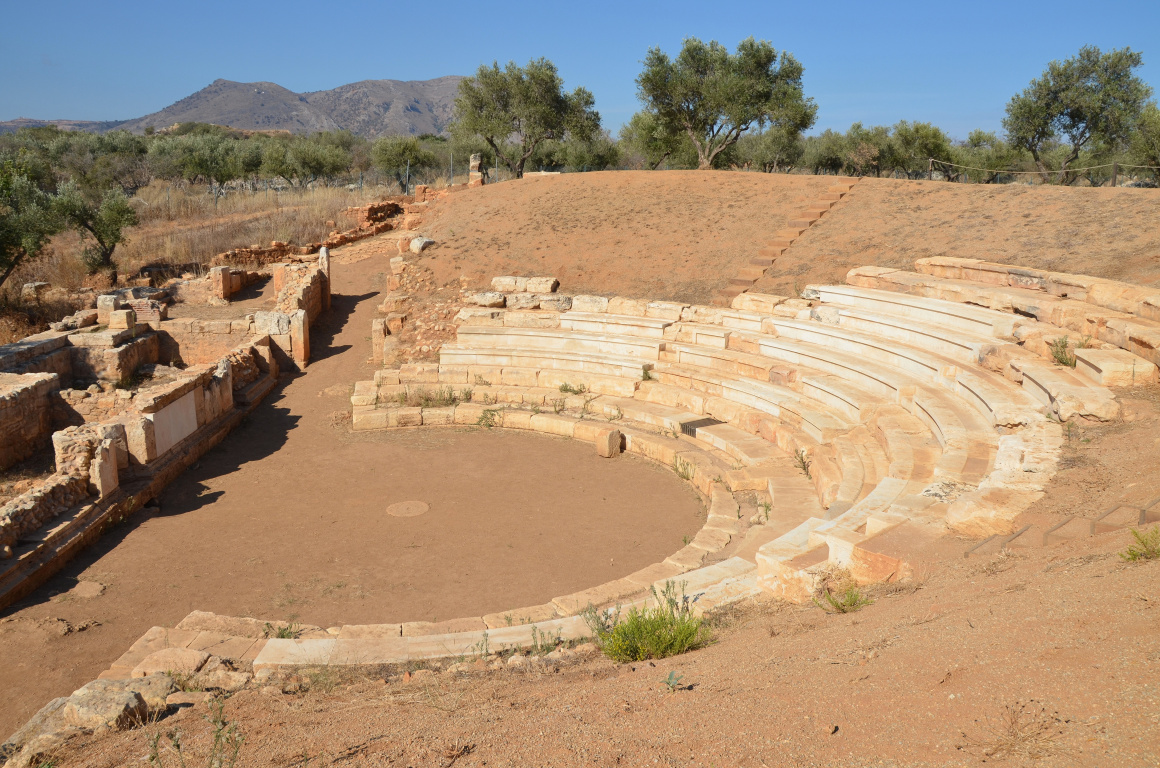
 'Aptera, Crete' - Attribution: Carole Raddato
'Aptera, Crete' - Attribution: Carole RaddatoIn summary, Crete's arts scene spans the spectrum from ancient to avant-garde. You can admire a 3,500-year-old fresco in the morning, purchase a hand-loomed blanket in the afternoon, and attend a modern art opening in the evening. The common thread is a love of creativity and expression that runs through the Cretan people. Art here is not seen as a luxury but as a natural part of life – whether it's a decorative plate in a grandmother's kitchen or a famous painting in a museum. When visiting, keep an eye out for those artistic details: carved doorways, embroidered dresses, and the music gently wafting from a local café. It's all part of Crete's rich artistic mosaic.


